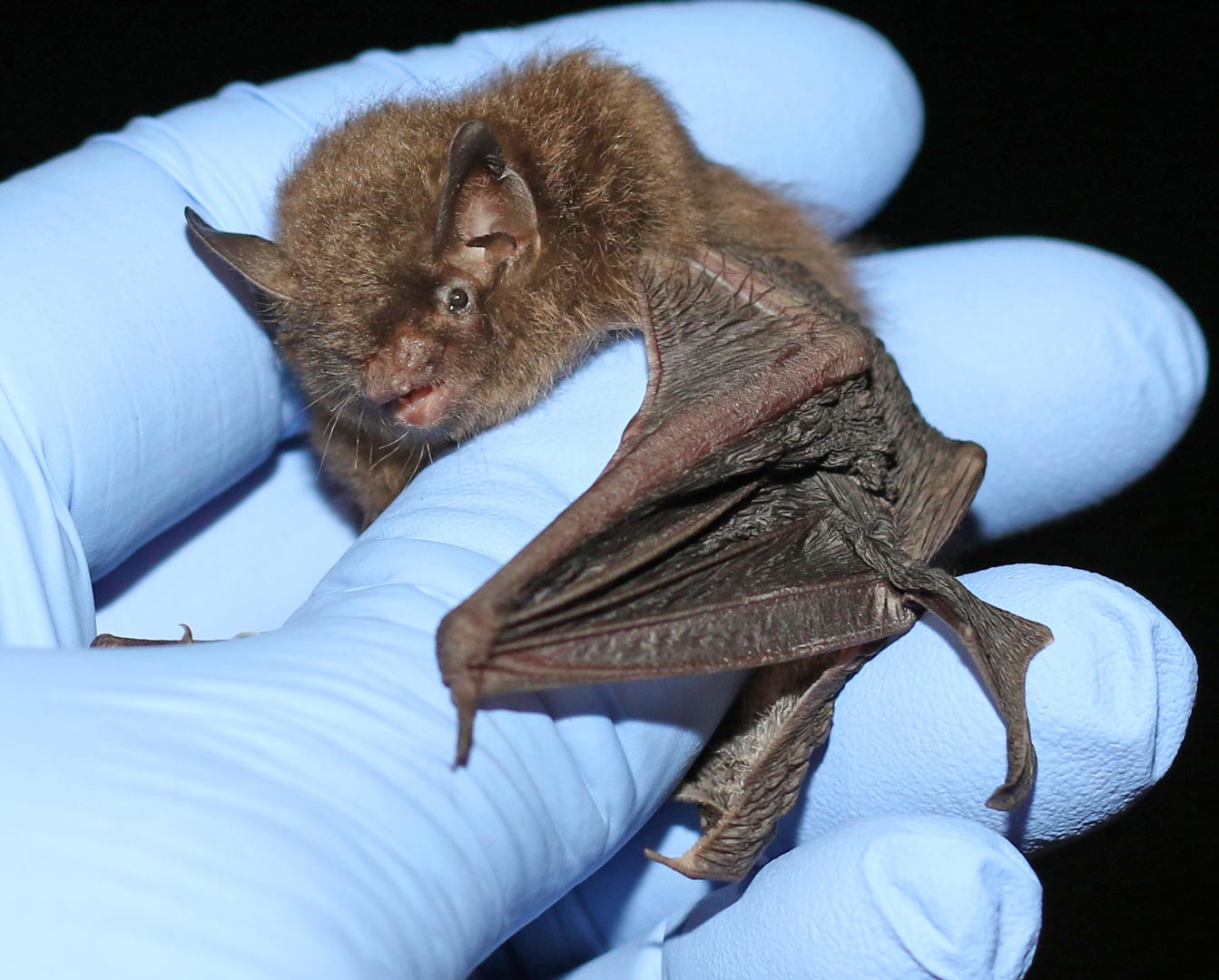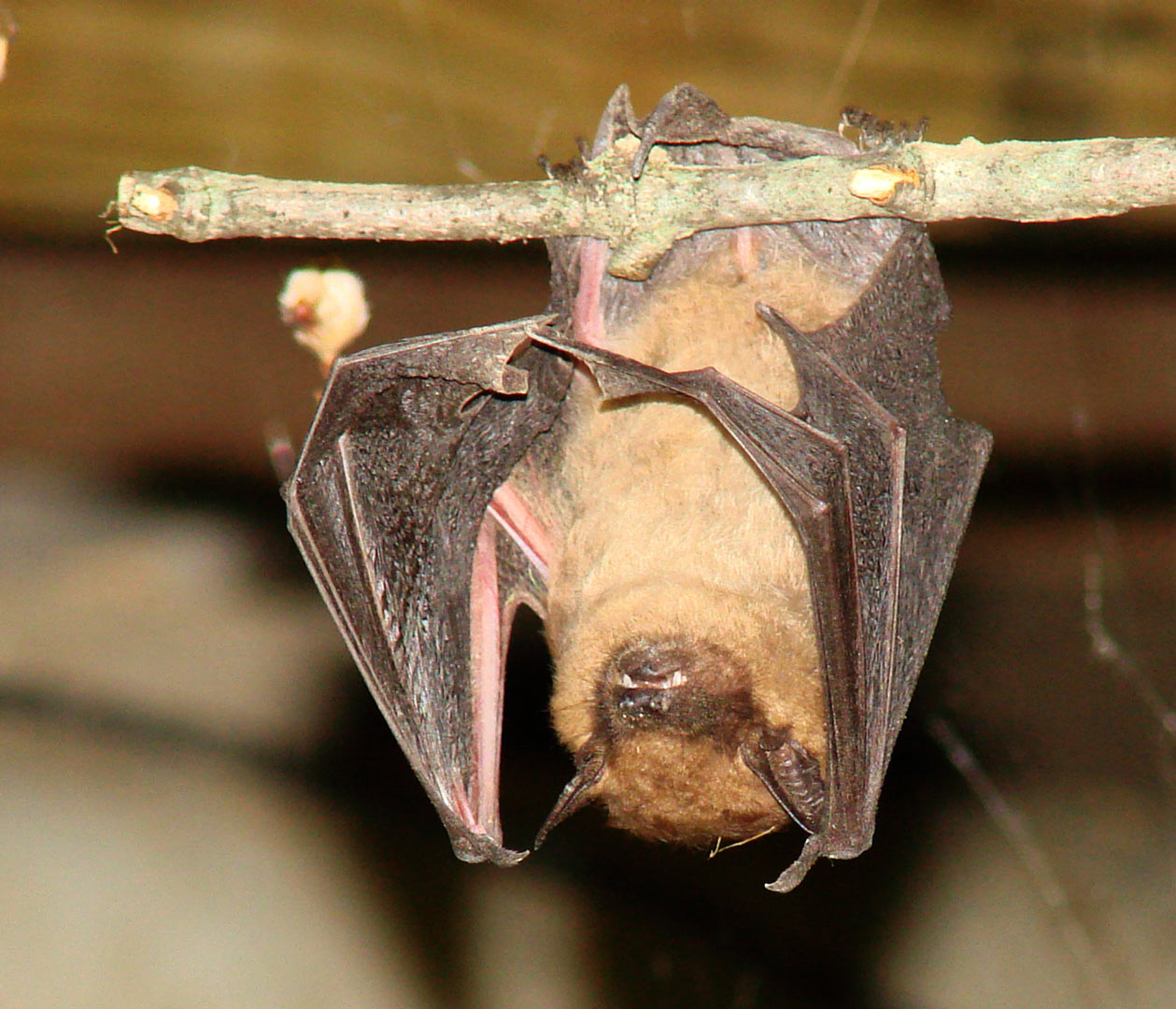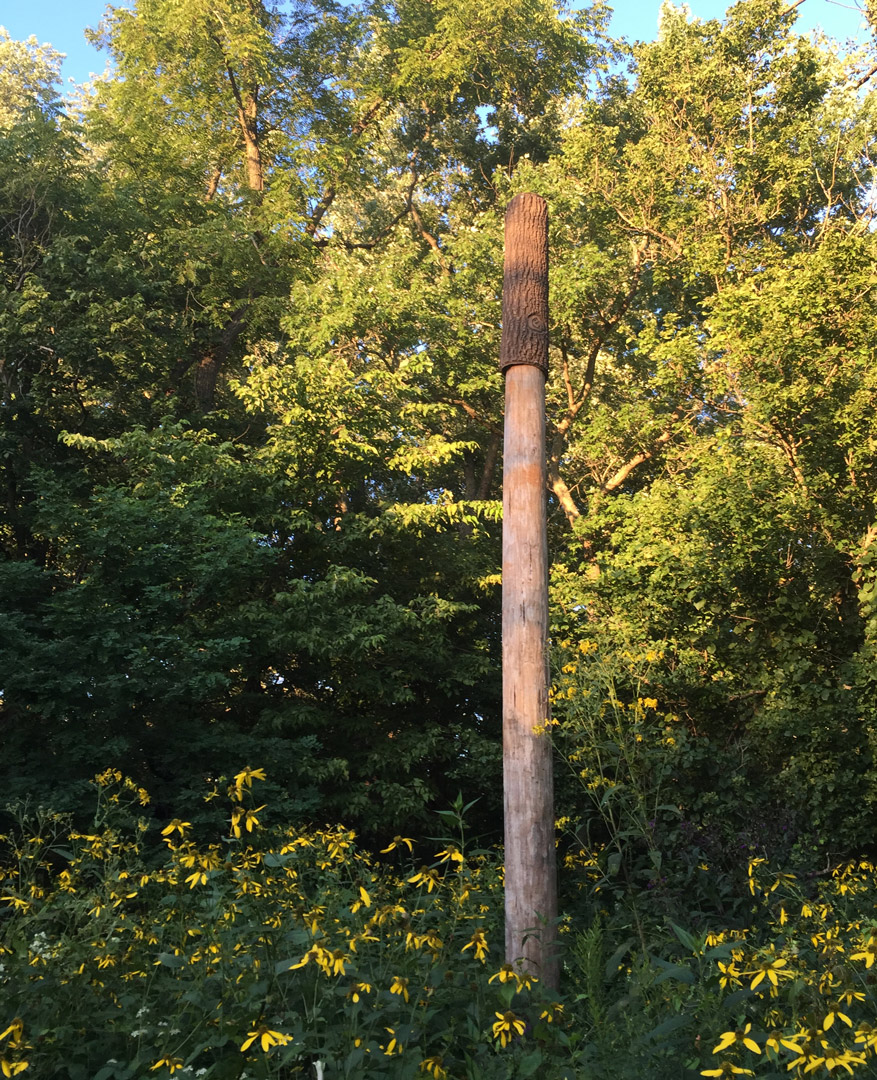CARRIE MORROW, Assistant Resource Manager

I’m standing under a huge, dead cottonwood tree. Much of the bark has fallen off and the smooth inner bark stands out as a white beacon in the dark green woods. The sun is setting rapidly and a barred owl calls off in the distance. A mosquito buzzes by my ear and I swat it away with my hand. Only a few more minutes and the sight I’m anxiously waiting for should appear. I’m looking up at the last sections of bark remaining on this beautiful old tree. The base of this tree, like many in the vicinity, has been gnawed on by beaver.
Suddenly I see a small dark shape drop out from under the bark and flutter over my head. Yes, the first bat of the night! This tree is home to hundreds of Indiana bats, a federally endangered species threatened by habitat loss and white-nose syndrome (WNS). A large colony of Indiana bats has used this stretch of Big Darby Creek for many years. Dead and dying cottonwoods along the river’s edge provide great roosts for the bats to raise young in summer. Metro Parks has been monitoring these bats since their discovery in 2007.

Indiana bats are one of nine species of bats that have been recorded at the parks. There are only 11 species of bats known in Ohio. Like the Indiana bat, the northern long-eared bat (federally threatened) and the little brown bat are cave dwelling hibernators, which puts them at risk for WNS. This disease attacks bats when they are hibernating, causing their bodies to use up the precious energy reserves that would help them survive until spring. They wake up too early and hungry. If they exit their caves, they find little food and starve. Tri-colored bats and big brown bats also use caves to hibernate and have been affected by WNS. Hoary and red bats have been able to escape the effects of this threat. These bats rarely use caves and spend most of their time alone in trees. The two remaining bat species in our Metro Parks are the silver-haired and evening bats. Not as common or well known, these species also may be able to avoid exposure to WNS as they aren’t known to use caves and are more typically found in tree cavities in their summer and winter ranges.
Knowing the threats to our bats and the great benefit bats are to our environment—many eating several times their body weight in insects each night—Metro Parks has taken steps to help them. We’ve conducted many surveys to learn which bats call the parks home. Some surveys involved mist-nets which allow biologists the opportunity to monitor bat health and positively identify species. More recently, acoustic monitoring is becoming more useful. This equipment can detect and record bat calls, which allows us to determine bat abundance and possible bat species in the area. In partnership with the US Fish and Wildlife Service, we have been able to capture and radio track Indiana bats to roosts trees. We can conduct exit counts to see how many bats are using the trees. These counts have been conducted throughout summer to observe the variability of bats in one tree. Typically, a colony will have several roosts and will not use the same tree every night. This allows them to be flexible should they lose a roost tree due to high winds or loss of bark.

Since many bats are able to use artificial structures, Metro Parks has provided a variety of constructed roosts for them. Bat condos and houses are constructed to offer the bats better roosting habitats. In addition, artificial tree roosts have even been constructed to mimic dying trees with sloughing bark. Big brown and little brown bats are most likely to take advantage of these structures. Many times bats have also been discovered in old barns and houses on Metro Parks’ land.
As I continue my watch at the cottonwood tree, the bats fly out in twos and threes. Slowly the stream of bats slows. It gets much darker and more difficult to see the bats as they leave the roost. I’m still swatting mosquitos and other curious insects away from my ears, but I’m feeling better knowing the bats are hunting them just over my head.
Finally, there are no more bats and I look down at the clicker counter in my hand. I’ve recorded 222 bats! It’s difficult to imagine as many bats as this crammed under the bark of that one cottonwood tree. I begin to make my way out of the woods with a smile on my face. I hope this group of bats can overcome the many challenges that threaten their future. As I walk away from the tree and turn on my flashlight to find the trail back to my car, I’m grateful to be able to help them thrive. I look forward to counting their flights in the future and watching them drop from the trees into the sky.
